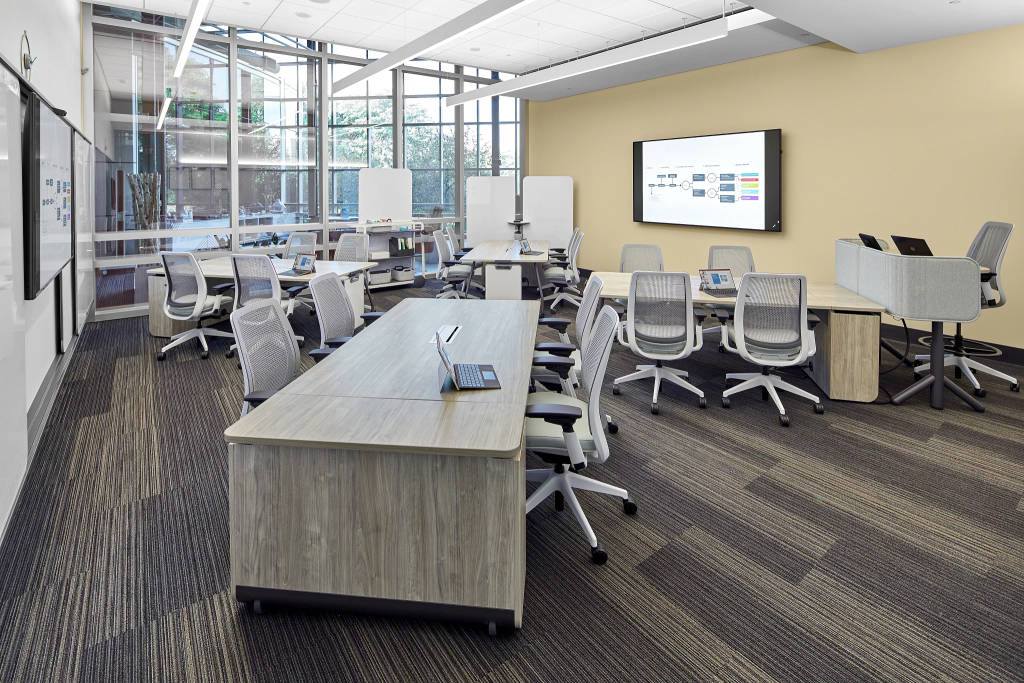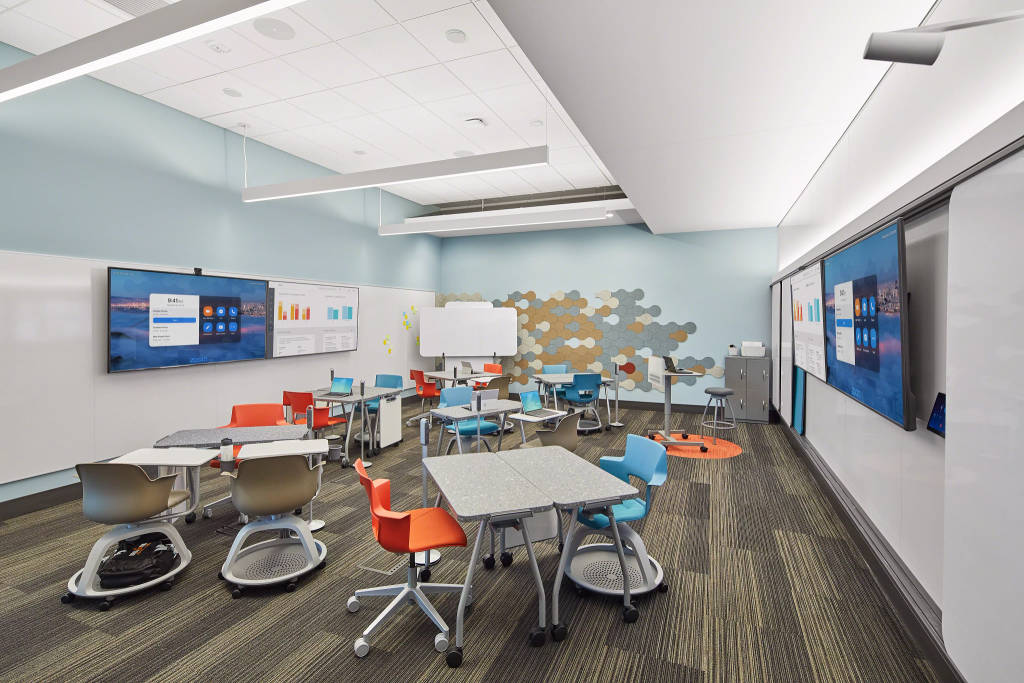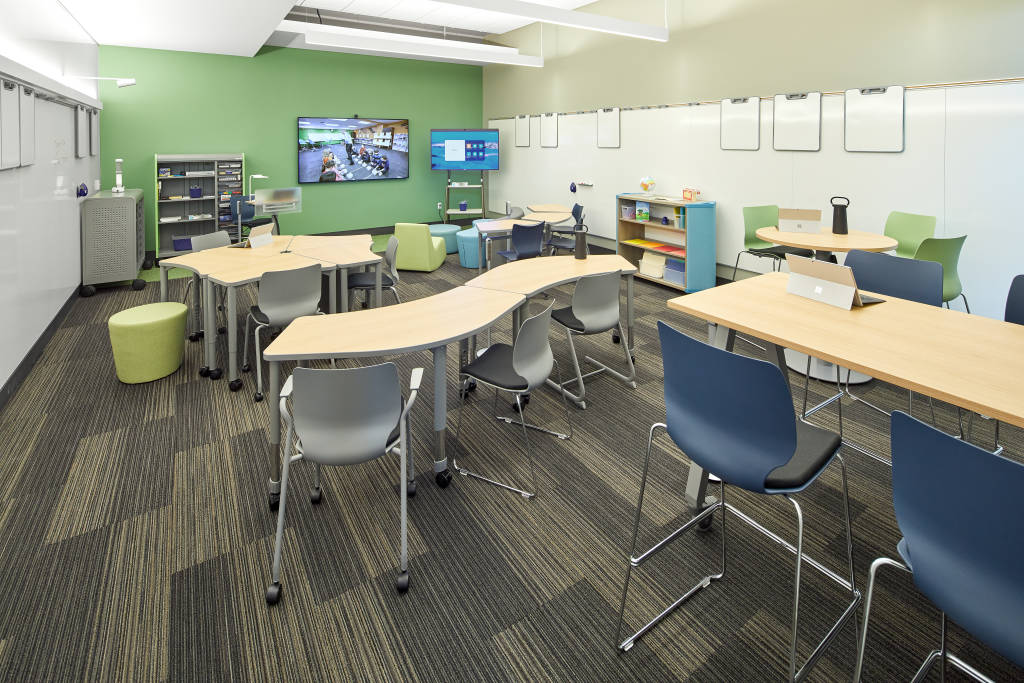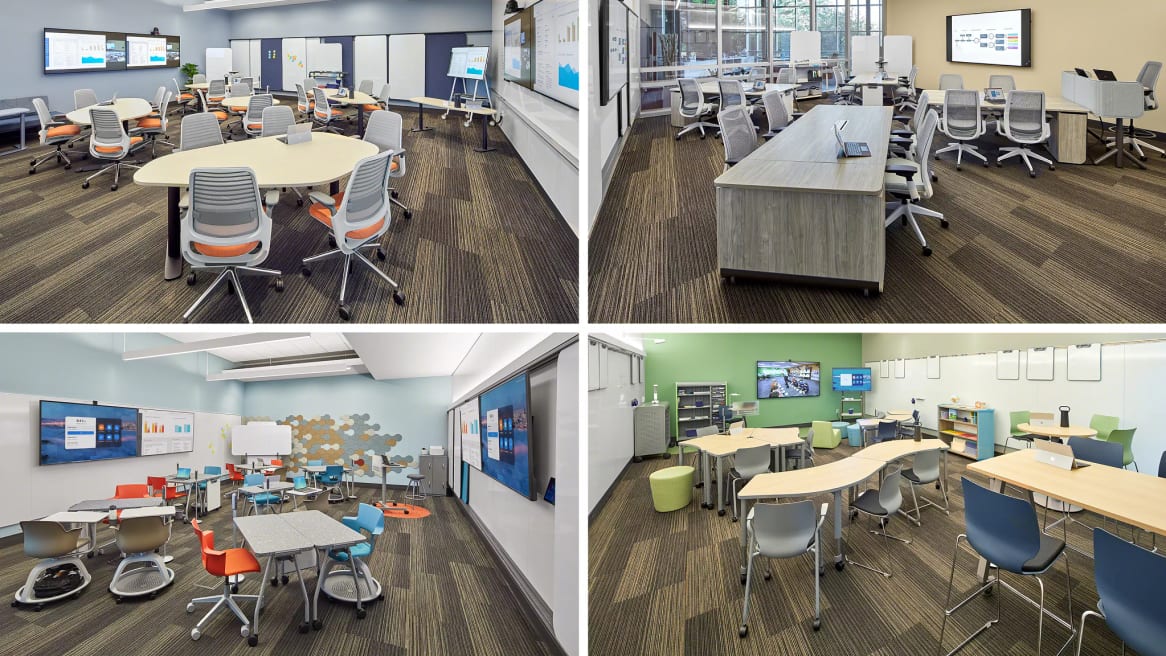Testing Hybrid Learning Spaces: 7 Key Takeaways
What we learned from testing four hybrid classrooms.
Hybrid learning in the classroom – like hybrid work at the office – is here to stay and will continue to grow. According to a recent global Anthology/UNESCO study, students overwhelmingly support having a hybrid option at their university or college. In fact, many say they need it to remain in school and be successful. Although schools – both K-12 and higher education – were first pressed by the pandemic into adopting emergency virtual learning options, there is still a wide gap in understanding effective and versatile ways to make both remote and in-person connections equitable, engaging and easy-to-use for educators and learners alike.
HYBRID IS HARD
There are a number of challenges surrounding the journey to establishing a successful hybrid learning model.
- Comfort with tech varies – Learners and educators have varying degrees of familiarity and comfort with using integrated technology – monitors, digital whiteboards, audio settings and software platforms.
- Tech can be a barrier – Technology can do wonders to connect people – but if not designed and integrated for the desired outcome, it can have the opposite effect – by becoming an impediment to learning and interaction.
- Spaces need to do more – The environment itself is being asked to play a greater role – the mobility and location of monitors, classroom chairs, classroom tables and digital aides are integral to the hybrid learning experience.
RESEARCH + PROTOTYPES
Steelcase partners with technology leaders Zoom, Microsoft and Logitech, and designed four new hybrid classrooms with integrated technology at its Learning and Innovation Center on the Grand Rapids, Michigan campus. Researchers gathered feedback through surveys, observations and interviews with in-person and remote participants who used the spaces. They measured if the spaces were easy-to-use (intuitive tech and easy to navigate environments), engaging (everyone can see and interact with content) and equitable (everyone hear and be heard, use shared and individual devices effectively). Here’s what they found in each space and the seven key takeaways researchers identified.
HYBRID LEARNING VIRTUAL TOUR
Register for a virtual tour of our hybrid learning classrooms.
CLASSROOM 1: DIGITAL LEARNING LAB

This classroom is designed to allow for a seamless transition from large presentations to small breakout groups where students can co-create in-person and virtually. Participants found the layout worked well for small groups. It was easy to hear and see remote participants and content. In classrooms with multiple displays and cameras, researchers observed it is key to provide simple technology set up options and the ability to control the technology whether the educator is at the podium or walking around.
CLASSROOM 2: LEARNING STUDIO

This room is designed to connect learners to a community outside the classroom. Technology is integrated throughout the room to help students engage, capture and share information. The space received top marks for acoustics and the ability to separate people and content on different displays. Researchers identified that screen size, and camera and microphone positioning are particularly important in a larger space like this to make sure everyone can see and hear.
CLASSROOM 3: THE ZOOM ROOM

Overall, this virtual classroom received high praise. People loved the room’s versatility. Movable furniture and dual monitors on both sides of the space make it easy to transition to different modes of learning. The orientation of the room ensured people felt close to virtual learners at all times. Participants noted the value of eye-to-eye camera angles whenever possible to enable a more natural conversation.
CLASSROOM 4: K-12 LEARNING SPACE

This classroom was another example of how people enjoyed the fluidity and flexibility of the furniture. In-person learners could easily integrate their own devices. The variety of both low and high seating options supports tiered viewing and better sightlines throughout the space. Researchers did underscore the importance of a simplified technology set up.
7 KEY TAKEAWAYS
After reviewing all four spaces, researchers identified seven key takeaways to improve hybrid learning spaces.
Simple Wins Every Time
The first few minutes are critical for a successful hybrid experience. Using hybrid classrooms should be intuitive, uncomplicated and human-centered with simple technology that anyone can quickly learn and adopt. This applies to set up, transitions between activities and troubleshooting if something goes wrong.
Humanize Remote Participants
Remote participants should experience and be represented within the physical space as if they were there. They should feel embedded, not just there to observe. Camera views should provide the most natural view and make it easy to distinguish who is speaking. Find ways to bring remote participants off the wall and into the space when possible.
Make the Tech Movable
Technology should be as dynamic and flexible as the experience requires. Ensure the camera and technology let facilitators move around the room while engaging with the tools. Instead of technology dictating if and when students can move, ensure the needs of students and activities drive the movement and use of technology.
See It All. Don’t Overwhelm.
Participants should be able to easily see what they need to, at any time. However, sightlines should not be complicated and uncoordinated. Being able to see content and remote joiners at the same time is important. These consolidated visuals allow for coordinated sightlines and a shared experience. But be thoughtful about what everyone is seeing when all devices are in use. Multiple screens can create an overloaded, repetitive experience.
Energize, Equalize Through Analog
It’s important for analog tools to still have a presence, as they create energy by encouraging teachers and students to move. When you enable analog tools to be shared digitally, they can be a bridge between in person and remote students, letting everyone have a shared experience by seeing the same thing happen at the same time.
Build the Basics with Audio
Hearing is essential to engagement. Participants should always be able to hear and be heard. Achieve a baseline level of audio in every hybrid experience. People should not have to speak at a level they’re not used to and that seems unnatural. Aim to create more of a discussion and reduce strain.
Solve for Small Group Hybrid
Small group activities are important and impactful learning experiences. Support engaging small groups with digital and analog tools. Organize breakouts around people, not technology. Mobile furniture and devices create more seamless transitions. Solving for small groups also includes considering how people can hear clearly without background distractions, and how analog tools can be shared virtually.
IN SUMMARY
Easy-to-use learning spaces were most successful. Unless using the space is easy and intuitive, equity and engagement are difficult to achieve. By identifying opportunities based on these prototypes, designers from Steelcase and our tech partners can continue to iterate and improve hybrid learning spaces for educators and learners of all ages.
HYBRID LEARNING VIRTUAL TOUR
Register for a virtual tour of our hybrid learning classrooms.


